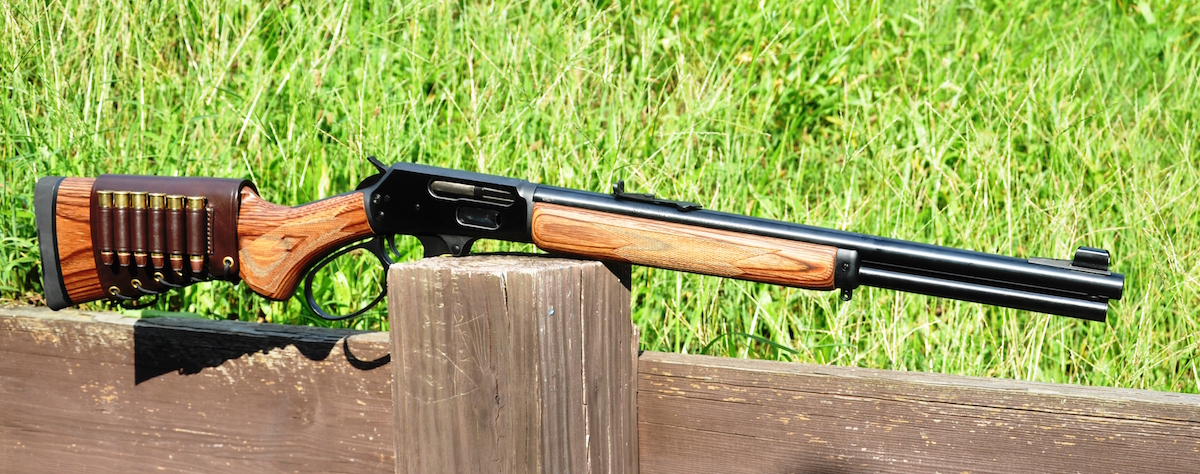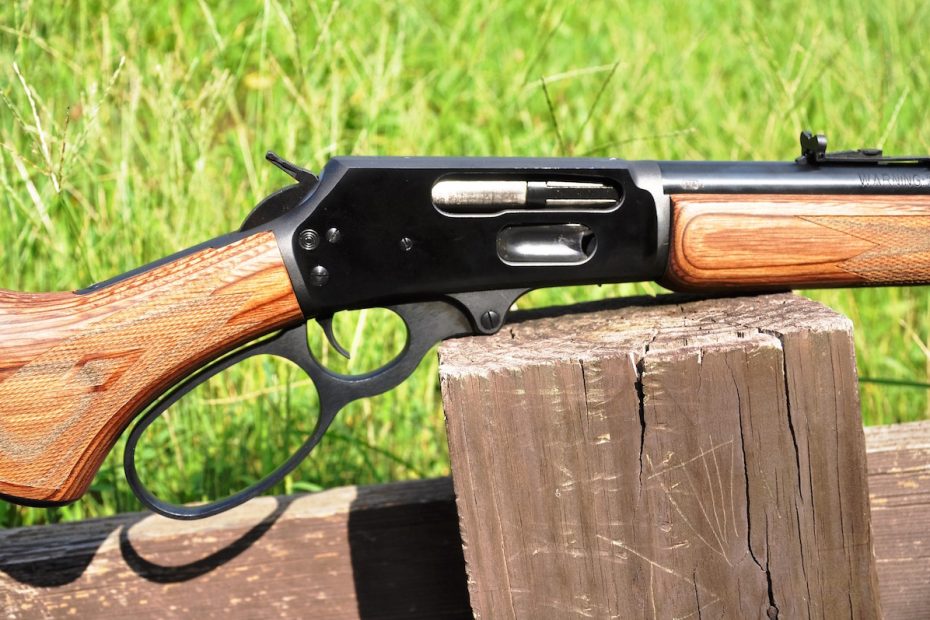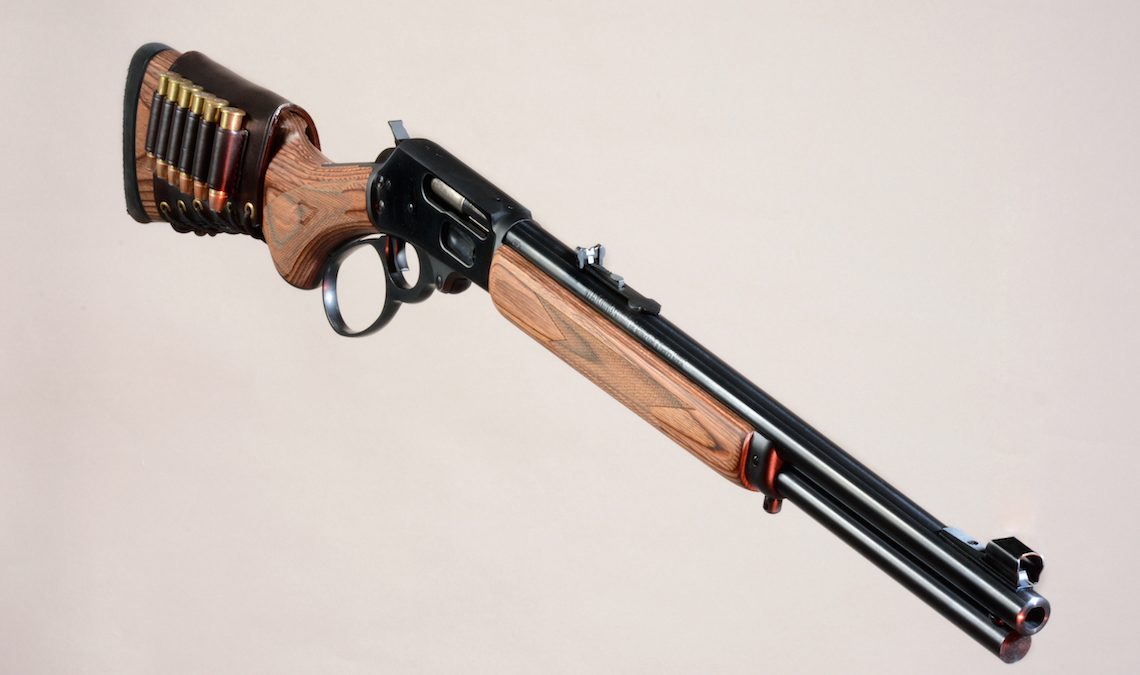
For more information, visit [track-link url=”https://www.marlinfirearms.com/” campaign=”Marlin1895″ target=”_blank”]https://www.marlinfirearms.com/[/track-link].
To purchase on GunsAmerica.com, click this link: [track-link url=”https://www.gunsamerica.com/Search.aspx?T=1895GBL” campaign=”MarlinOnGA” target=”_blank”]https://www.gunsamerica.com/Search.aspx?T=1895GBL[/track-link].
If you grew up in the sixties, Westerns were a large part of your entertainment. There was Marshal Dillon (Gunsmoke), Rawhide, Have Gun Will Travel and Wanted Dead or Alive. Over the fireplace in our den was my dad’s Winchester Model 94 that was made in the early twenties. I would sit with dad and watch Matt Dillion, Rowdy Yates, Paladin and others confront evil and make the West safe. Even in black and white, the shows captured my imagination. The Colt Single Action and the Winchester won the West.
Whenever I see a lever gun, two additional memories come to mind. The first is Lucas McCain (Chuck Connors) and his “mare’s leg” in the late fifties and early sixties television show, The Rifleman. The second memory is Rooster Cogburn (John Wayne) in the original 1969 version of True Grit. Somehow, “fill your hands, you sonofabitch” said it all! While Hollywood gave both McCain and Cogburn Winchester rifles, many real-life heroes carried [track-link url=”https://www.marlinfirearms.com/Firearms/default.asp” campaign=”Marlin1895″ target=”_blank”]Marlin Firearms[/track-link] rifles. According to the company’s website, Annie Oakley, Captain Hardy, and William “Buffalo Bill” Cody all used Marlin rifles.
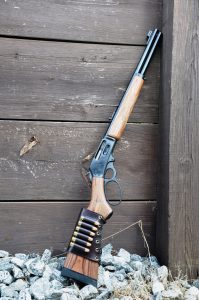
SPECS
- Chambering: .45-70 Gov’t
- Barrel: 18.5 inch
- OA Length: 37 inches
- Weight: 7 pounds
- Stock: Laminated
- Sights: Semi-buckhorn rear, brass bead front
- Action: Lever-action
- Finish: Blued
- Capacity: 6
- MSRP: $679.99
When I deployed to Alaska in 1976, I knew that I would be spending time in the wilds of the Yukon. Having grown up in South Georgia, I did not own a rifle of appropriate caliber for the Alaskan big game. So, before flying north, I picked up a Marlin lever gun in the caliber of .444 Marlin. I was able to get a good deal on the big bore Marlin since .444 was considered a bit much for Georgia whitetails. I never took any game with the .444, but it provided me great comfort when hiking or riding the back woods. I sold it to a friend in Fairbanks when I departed for the lower 48, but always wanted to replace it. When I did replace it, I selected the Marlin [track-link url=”https://www.marlinfirearms.com/firearms/bigbore/1895GBL.asp” campaign=”Marlin1895″ target=”_blank”]1895GBL[/track-link] in .45-70 Govt.
The 1895GBL is one of seven big bore models that represent an entirely modern lever gun that incorporates Marlin’s original lever action design with precision production methods and modern metallurgy. The solid-top receiver and side ejection design is Marlin’s signature and the added structural strength allows their lever actions to handle the pressures of large-bore calibers (as well as simplifies the mounting of optics). The receiver is pre-tapped for mounting optics. The 1895GBL features a big loop lever that is an asset when wearing heavy gloves. The lever operates a massive stainless steel bolt that, in turn, cocks the external hammer. The trigger on our test rifle broke cleanly with an average trigger weight of 6 lbs.
The stock and fore end on the 1895GBL is an attractive brown laminate that is not only stronger than wood, but when combined with the Mar-Shield finish is far more weather-resistant. The stock is a pistol grip design that proved more comfortable than a traditional straight stock. Both the stock and fore end are press-checkered with accent lines on the front and rear of the pattern. An 18.5-inch barrel features Ballard-type rifling that consists of six-grooves and a 1:20 twist rate. An adjustable semi-buckhorn rear sight has a folding blade while the front ramp sight has a brass bead and a protective hood. The full-length tubular magazine will hold six of the large .45-70 cartridges.
[one_half]

[/one_half]
[one_half_last]
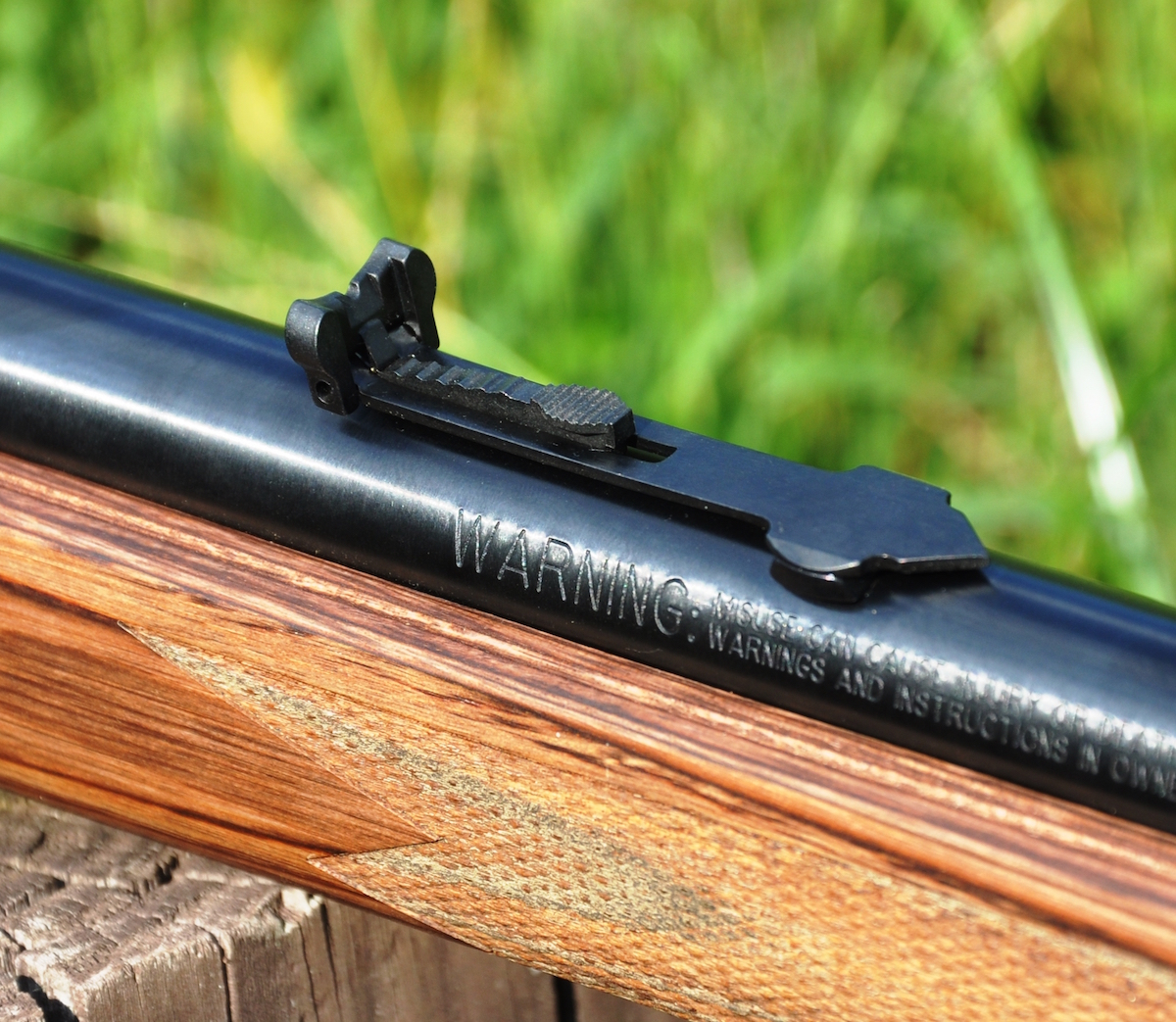
[/one_half_last]
While the 45-70 Govt. cartridge is capable of taking any game animal on most continents, the wide variety of ammunition allows the user to select a round that is suitable for their use. We tested five loads that ranged from 300 grains to 420 grains. Remington’s 405-gr. jacketed soft point was, by far, the mildest, averaging 1,047 fps. This was followed by Black Hills’ 405-gr. flat nose, cast lead that averaged 1,172 fps. Stepping up to a modern high-performance load, Federal’s 300-gr. jacketed soft point averaged 1,695 fps while Hornady’s LEVERevolution 325-gr. FTX ballistic tip averaged 1,812 fps. However, the king of the mountain was Garrett Cartridges’ (no relation to me!) Hammerhead 420-gr. hard cast +P load. This custom load averaged 1,768 fps of pain out of the 1895GBL.
While Marlin’s solid-top receiver and side ejection allow an optic to be mounted without interfering with the standard operation of the rifle, I wanted to evaluate the basic rifle and iron sights. All groups were fired using the factory irons from a table rest at 50 yards. I limited the test groups to three-shot groups to conserve both the limited supply of ammunition and my shoulder.
Hands On

Given my aging eyes, and a 6-lb. trigger, I was pleased with my performance with the Marlin. The Hornady LEVERevolution load printed a tight 0.68-inch group with two rounds going through the same hole. The soft-shooting Remington load had a group that measured 0.71 inches overall. The Federal load produced a 0.87-inch group while the Black Hills opened up to 1.09 inch. It helps that the holes are almost ½-inch in diameter!
By the time I got to the Garrett +P Hammerhead load, I knew that the rifle was capable of a tight group. However, my tolerance level, in the pain category, was giving me doubts. I decided to add an extra layer of cushioning between my shoulder and the stock and tried not to anticipate what was about to happen. I managed to shoot a 0.83-inch group that did not include a called flyer that was the result of a magnificent flinch!
The more we shot the Marlin, the smoother the action became and, with the lighter loads, the experience was very pleasant. I did discover the importance of properly loading the rounds through the loading gate. The round must be seated completely into the magazine and not be allowed to rest against the loading gate. If that occurs, the round will not feed properly when the lever is cycled. More importantly, the action will lock solidly to the rear and require some prying to release the round.
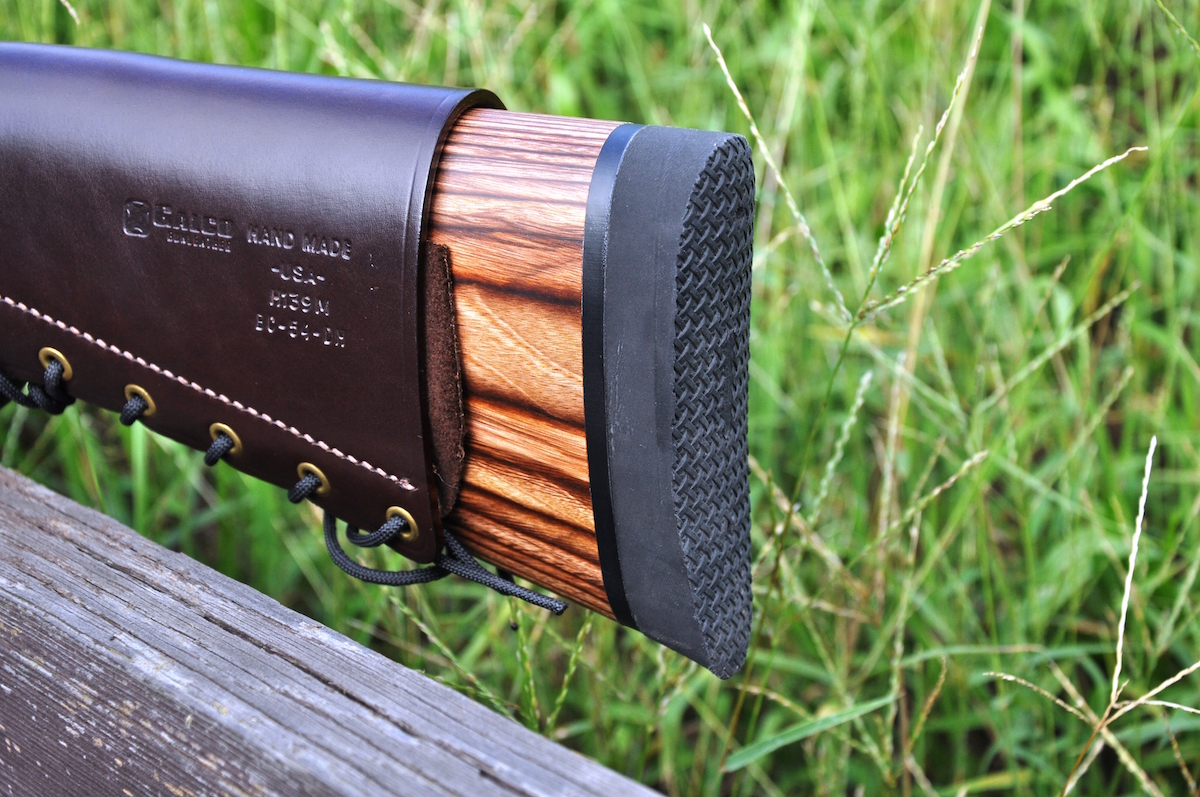
I reached out to my good friends at Galco for a couple of accessories. Any hunting rifle requires a sling, and [track-link url=”https://www.galcogunleather.com/tapered-rifle-sling_8_361_1308.html” campaign=”MarlinGalcoSling” target=”_blank”]Galco Tapered Rifle Sling[/track-link] proved ideal for the 1895GBL. Galco also sent me a “[track-link url=”https://www.galcogunleather.com/butt-cuff_8_450_1041.html” campaign=”MarlinGalcoButtCuff” target=”_blank”]Butt Cuff[/track-link]” which gave the 1895GBL an old school safari appearance. Like the sling, the Butt Cuff is made from top-grain cowhide and is finished to Galco’s high standards. The cuff has six metal-reinforced, eyelets that are used to lace the cuff to the stock. Six stitched loops keep that many cartridges readily available for a reload. As with all Galco leather, the Butt Cuff was well executed and added a degree of class to the Marlin.
Living in the Deep South, the largest game one can expect to run into is a large feral hog or perhaps a black bear. When several of my friends examined the 1895GBL, and the ammunition, they all had the same question, “What are you going to shoot with that?” My standard answer was “Anything I want!” On a serious note, the .45-70 is ideal for punching through brush when going after hogs or whitetail. While we were somewhat limited by the choice of using the factory iron sights, the addition of a properly zeroed optic makes the 1895GBL a potent rifle at longer ranges.
 For those who want more than just replacement sights, I would suggest [track-link url=”https://www.grizzlycustom.com/index.html” campaign=”MarlinGrizzlyCustom” target=”_blank”]Grizzly Custom[/track-link] of Columbia, Montana. Their Brush Hawg package takes a standard 1895 and does a complete overhaul. The barrel is shortened to 16.5 inches and re-crowned and the magazine tube is cut to match the barrel. Grizzly disassembles the rifle and removes any burrs and the action is dehorned and polished for smooth cycling. The loading gate is modified for easier loading and unloading and a stainless steel follower is installed. Grizzly uses an LPA rear sight that is fully adjustable and features protective wings and an optional short accessory rail. Grizzly will also replace a straight stock with a pistol grip stock.
For those who want more than just replacement sights, I would suggest [track-link url=”https://www.grizzlycustom.com/index.html” campaign=”MarlinGrizzlyCustom” target=”_blank”]Grizzly Custom[/track-link] of Columbia, Montana. Their Brush Hawg package takes a standard 1895 and does a complete overhaul. The barrel is shortened to 16.5 inches and re-crowned and the magazine tube is cut to match the barrel. Grizzly disassembles the rifle and removes any burrs and the action is dehorned and polished for smooth cycling. The loading gate is modified for easier loading and unloading and a stainless steel follower is installed. Grizzly uses an LPA rear sight that is fully adjustable and features protective wings and an optional short accessory rail. Grizzly will also replace a straight stock with a pistol grip stock.
[one_half]
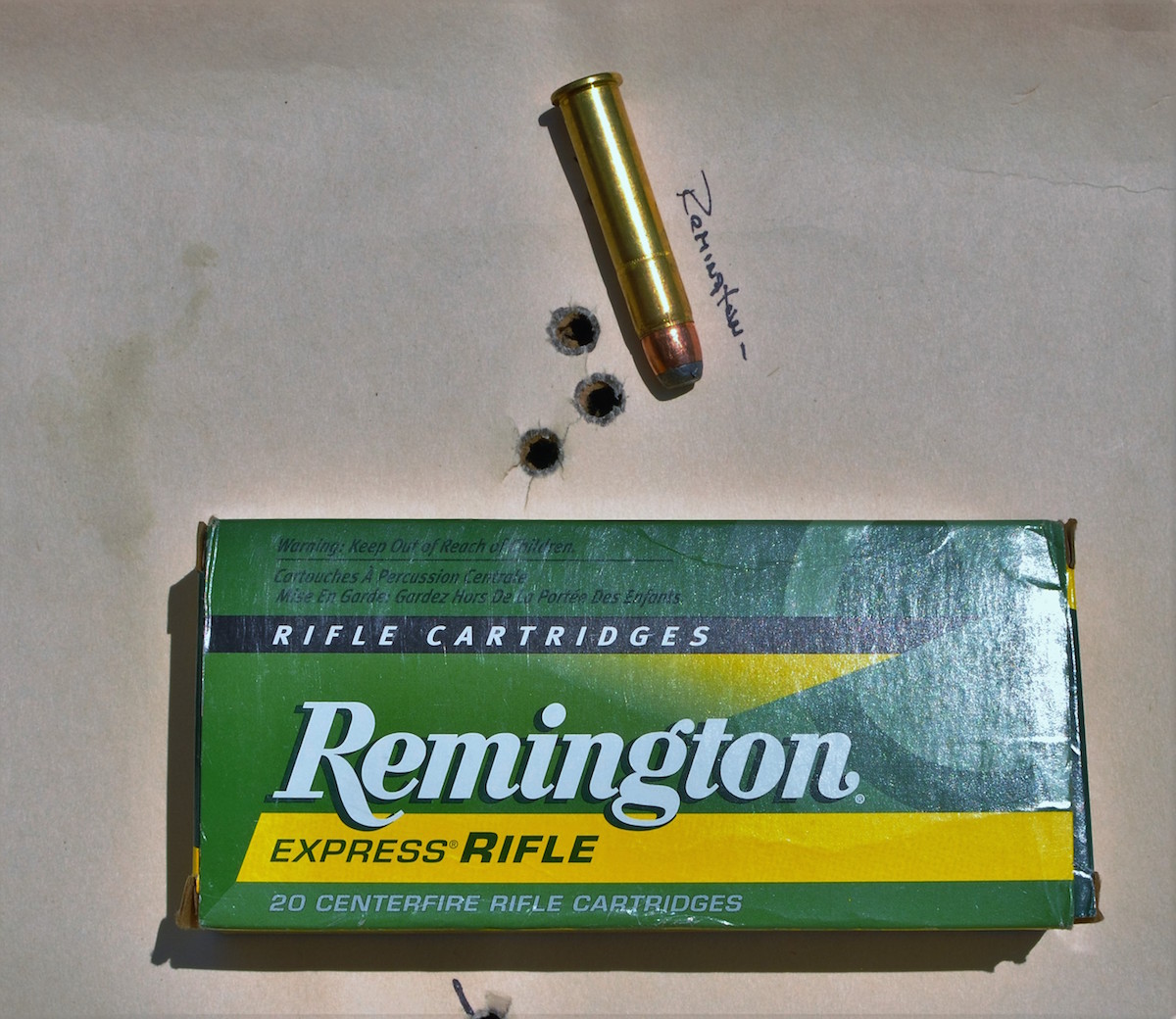
[/one_half]
[one_half_last]
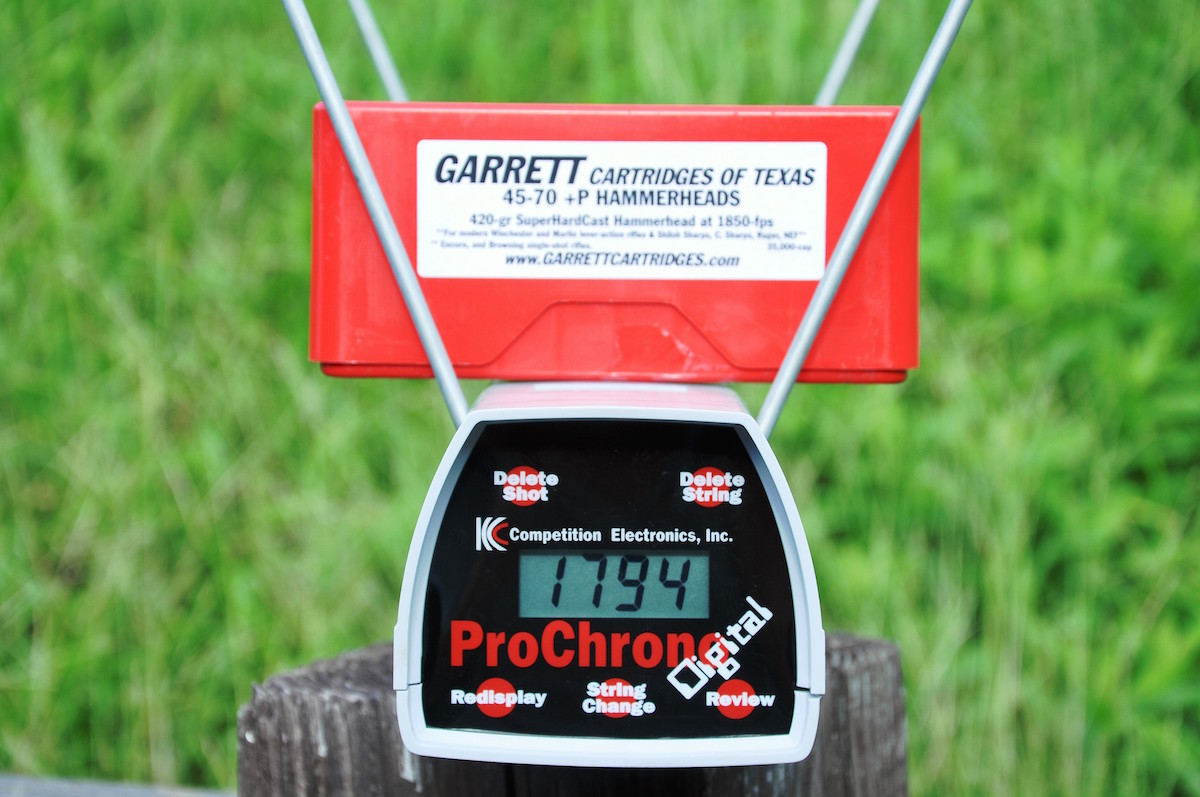
[/one_half_last]
I am looking forward to this hunting season and trying to get on some South Georgia hogs or a whitetail. I will probably use the Federal 300-gr. JSP for the hogs and Hornady’s 325-gr. LEVERevolution for deer. Regardless, there isn’t anything I can’t go after with the big Marlin. Sometimes, bigger really is better!
For more information, visit [track-link url=”https://www.marlinfirearms.com/” campaign=”Marlin1895″ target=”_blank”]https://www.marlinfirearms.com/[/track-link].
To purchase on GunsAmerica.com, click this link: [track-link url=”https://www.gunsamerica.com/Search.aspx?T=1895GBL” campaign=”MarlinOnGA” target=”_blank”]https://www.gunsamerica.com/Search.aspx?T=1895GBL[/track-link].
